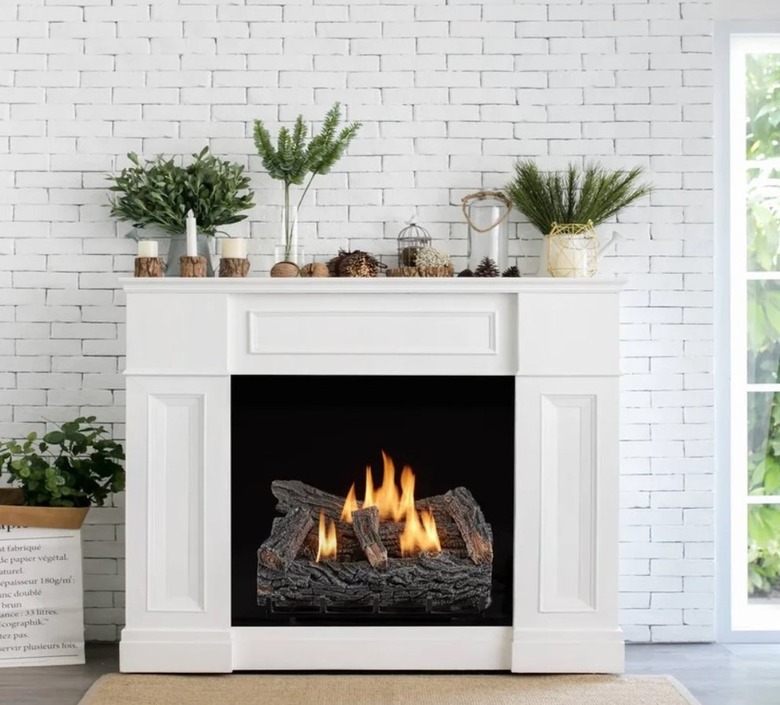How To Clean Ceramic Gas Logs
We may receive a commission on purchases made from links.
Even a gas fireplace needs a little attention from time to time, such as cleaning the ceramic logs within it. If the logs aren't placed properly, soot may develop on them due to improper combustion. Even in proper position, they get a bit dirty. Ceramic gas logs are easily damaged by harsh cleaning chemicals or rough handling, so use the gentlest cleaning methods to keep them in good working order. Clean the logs about once per year to keep them in great shape.
Do These Things Before Cleaning Ceramic Gas Logs
Do These Things Before Cleaning Ceramic Gas Logs
If you are the original owner of the ceramic fireplace logs, there's a good chance you still have the literature that came with the set. Read the manufacturer's recommendations for cleaning and for log placement, as it's important to put them back in the same position to maximize airflow, to prevent soot, and to prevent the creation of carbon monoxide, a harmful gas. In the event that the manual says not to remove the logs, don't move them — just clean them in place.
Whether you have the manual or not, take a picture of the logs before you remove them. This serves as a handy guide for how to place the logs back in the fireplace after you remove and clean them. Turn off the pilot light and make sure the logs are completely cool. Then take them out and set them gently on some scrap cardboard or old towels. The goal is to keep them protected so they don't chip or scratch, as either type of issue could affect their functionality.
Cleaning Ceramic Logs
Cleaning Ceramic Logs
Wipe each log gently with a microfiber cloth or other lint-free cloth, setting it down on a soft, old towel once the log is clean. For additional dust removal, vacuum the logs using an upholstery brush attachment. If that's not an option, gently brush off accumulated dust with an old toothbrush, nail brush, or any soft-bristle brush. Do not use a wire brush or metal scrub pads, as these could damage the logs. Also don't use water unless the log manufacturer specifically mentions that it's safe for that particular type of ceramic log, as they're not all the same.
Inspect each log for cracks or damage. If you can't tell whether they're damaged, either have a professional look them over to determine if they need to be replaced or just go ahead and replace them with the same size and type. Damaged ceramic fireplace logs could cause harm to other gas components within the fireplace, which adds up to even greater expense. Much like cleaning the logs, it's important to also inspect them annually, ideally before using them the first time once the weather cools.
Vacuum the cobwebs and dust out of the fireplace while the logs are out. A hand broom helps reach into the corners and works well for dusting off the walls and the inner-facing side of the screen or glass panels at the front of the unit. Wear a dust mask and eye protection while sweeping and vacuuming in the fireplace. Once you've cleaned thoroughly, replace the logs according to the manual or the picture you took before disassembling them.
